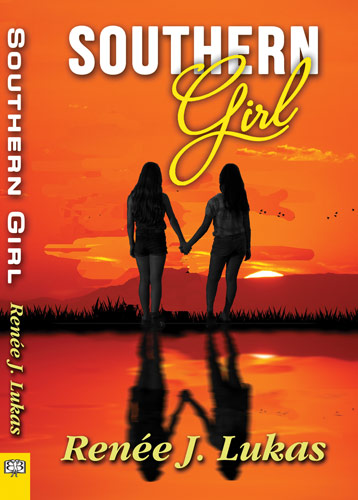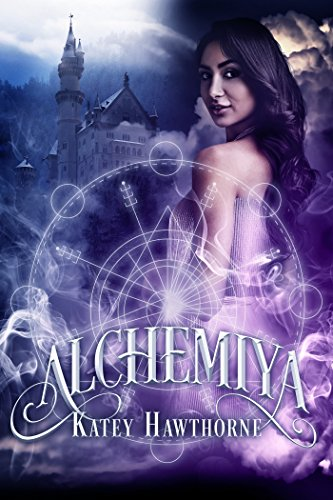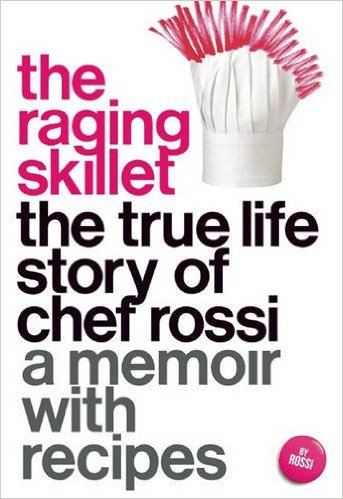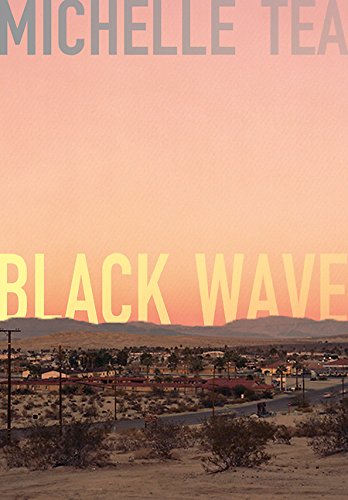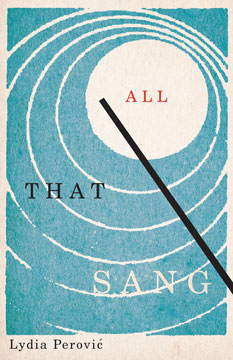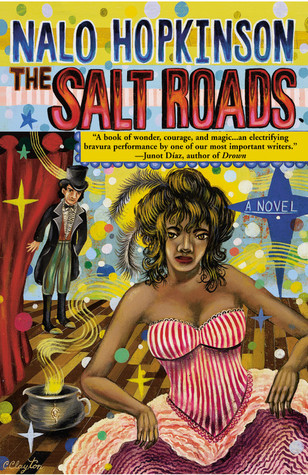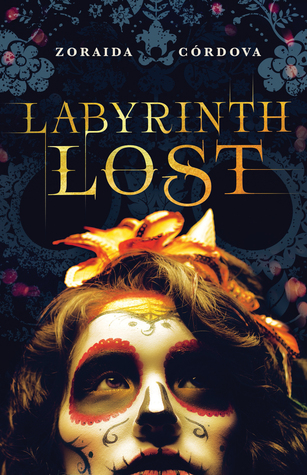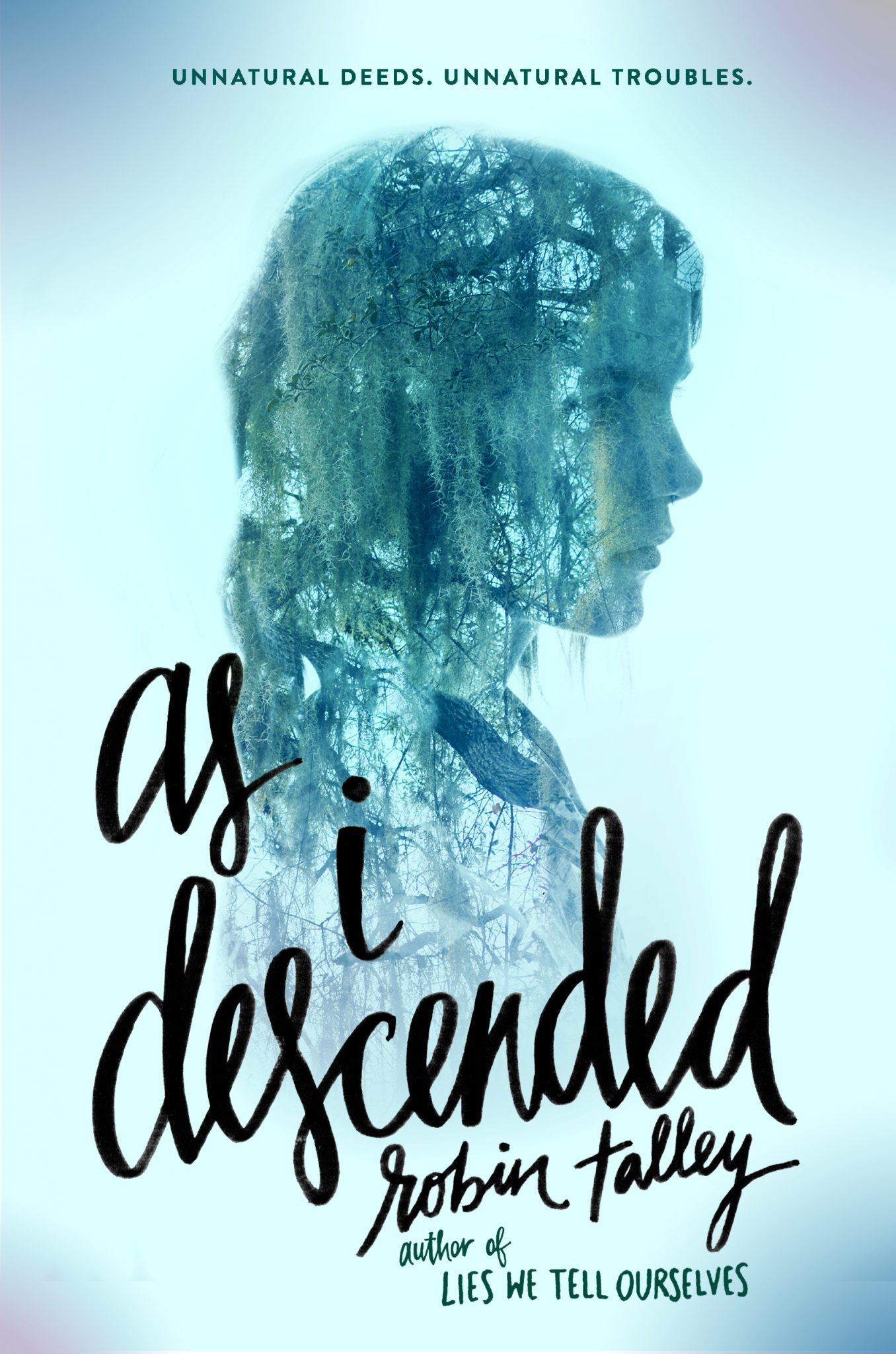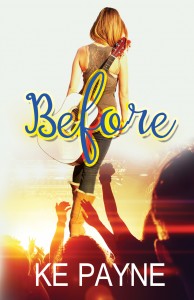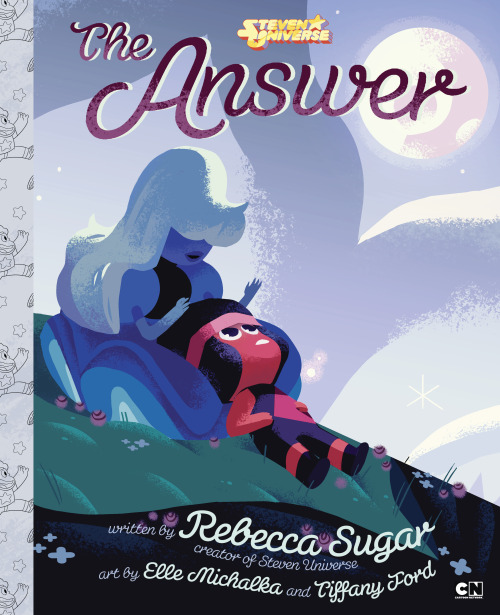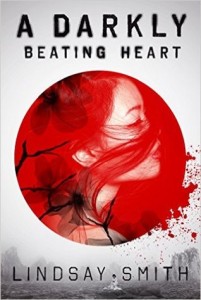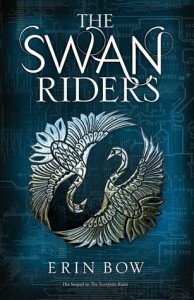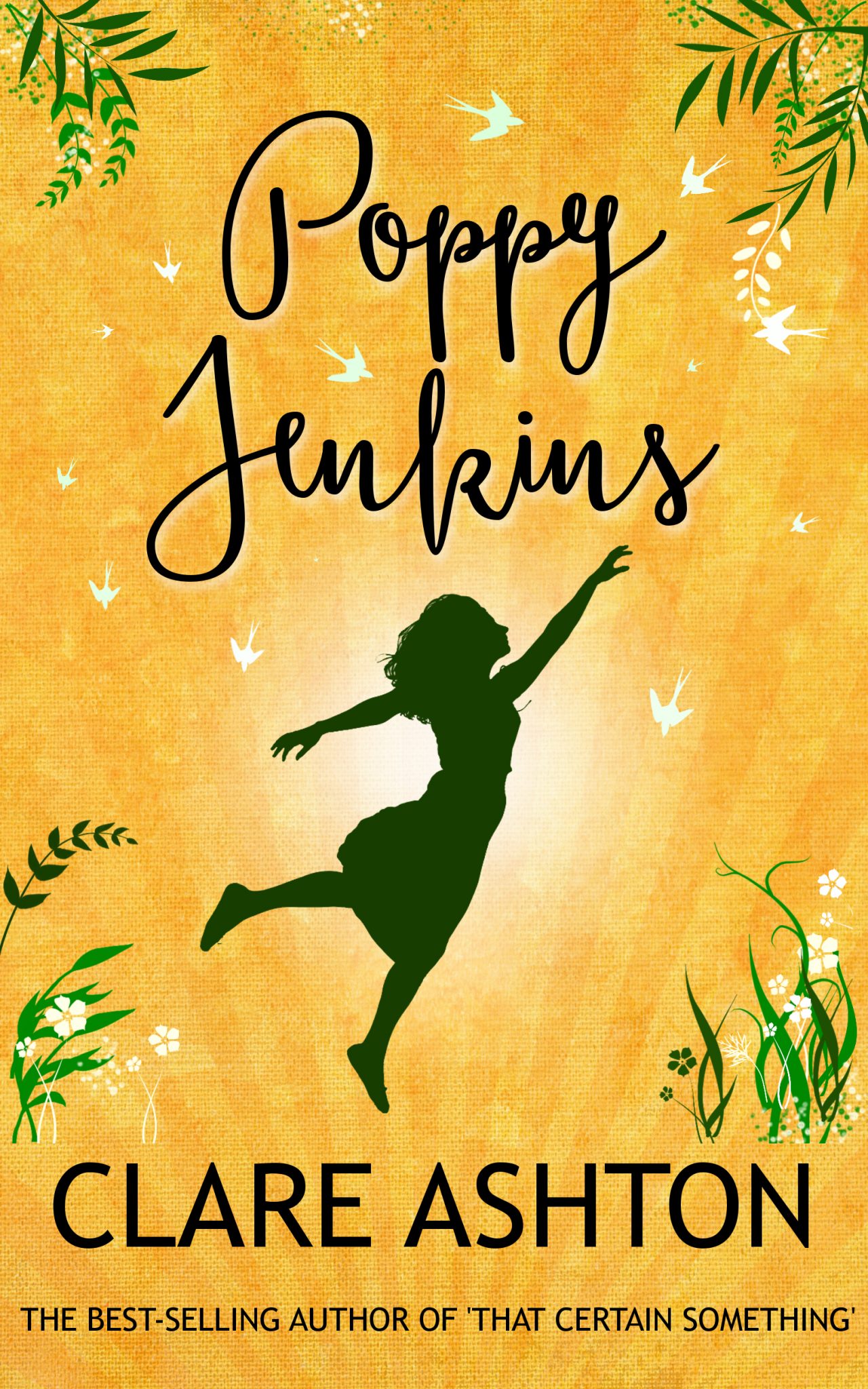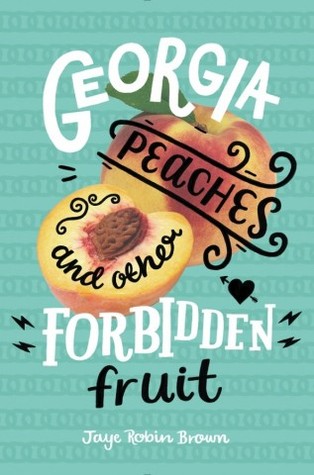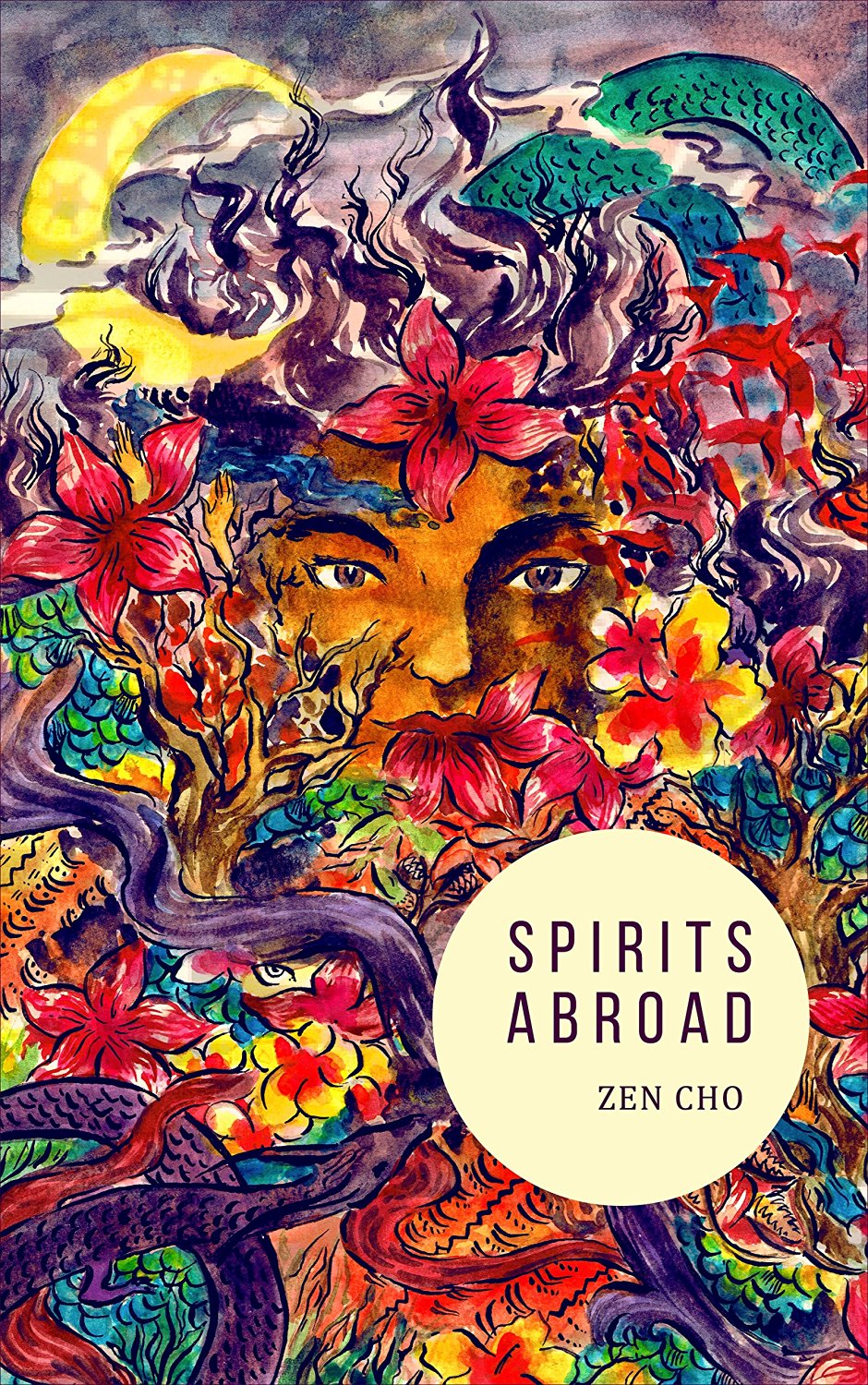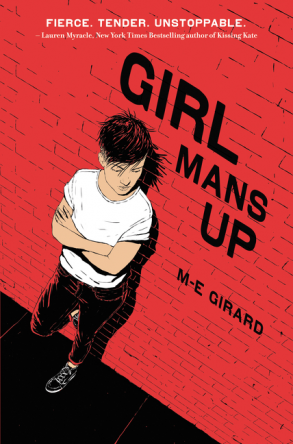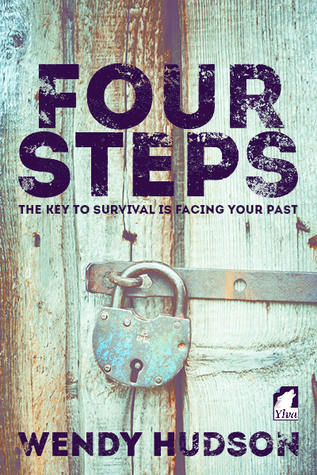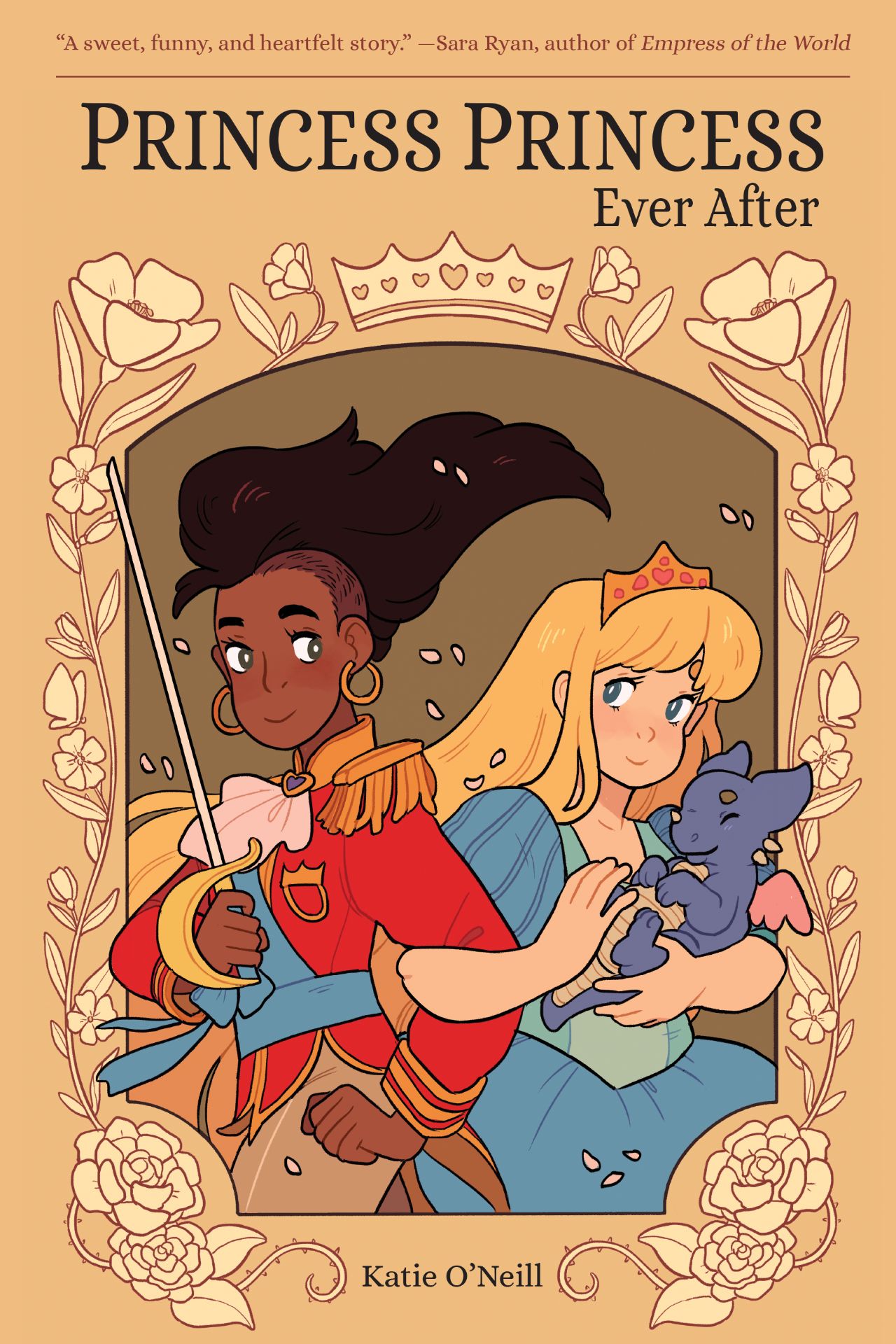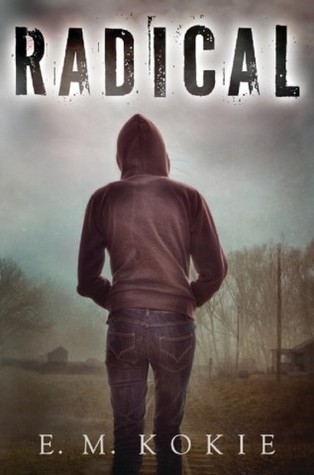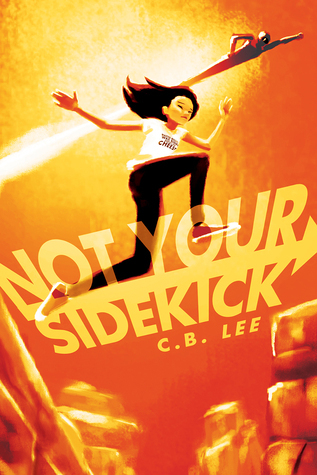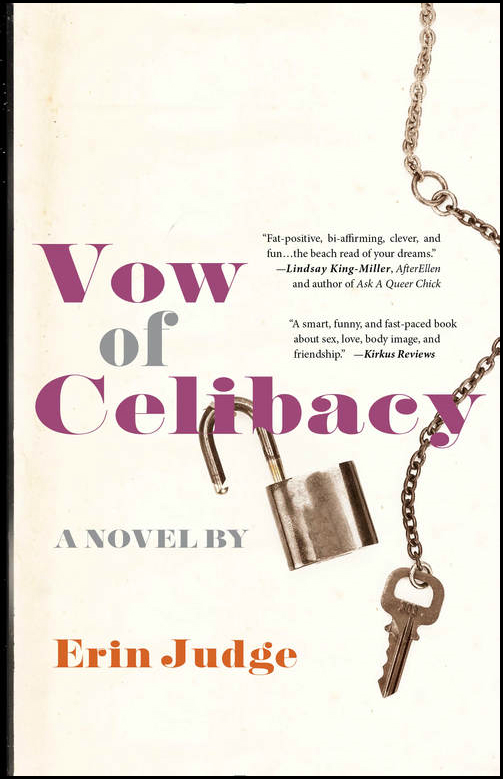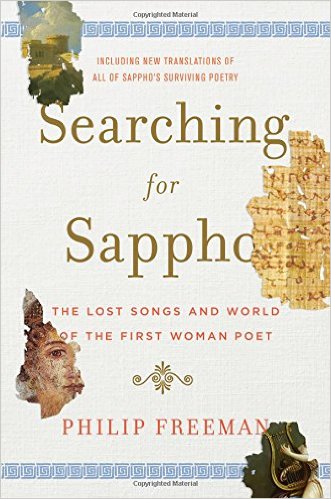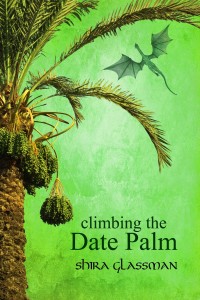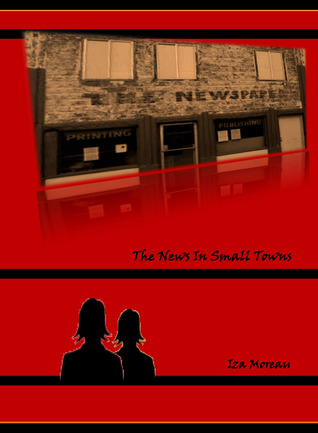Month: September 2016
Jess reviews Southern Girl by Renée J. Lukas
Southern Girl by Renée J. Lukas is an engaging portrait of a girl (and her family) from before birth through to the start of adulthood.
The novel begins with a brief snapshot of the protagonist’s parents: Carolyn, a New England lobster fisherman’s daughter and Dan, a Southern preacher’s protégé arriving at their ‘together’ house in tiny Green Fork, Tennessee. This brief scene sets the pace for their relationship throughout the novel and the impact of parental decisions on their offspring. In the next many chapters, we see the birth and significant moments of Jesse through somewhat childlike eyes.
As the main character grows, so too does the language and understanding of concepts shared in the text. Raised as the youngest daughter of a preacher in a Southern town, lots of the tension in Jesse’s life comes from small town familiarity and religion.
As a teenager, Jess deals with school troubles and youngest sibling contemplations. Significantly, a childhood friend, Stephanie, returns from Nashville. This triggers a series of events that has Jess questioning her sexuality, religion and connection to family. To avoid revealing more of the plot, these later-teen experiences are explored in depth and cover alcoholism, death, universal judgement, pressure on female athletes, pregnancy, and parental relationships.
Southern Girl knocks it out of the park on many levels – the intensity of teenage romances (both same and opposite sex), the conviction of youths raised within a church, the complexity of adult relationships and the strength in honest friendships.
While I felt some plot lines were a little too fictitious (particularly one involving both Jess and Stephanie’s mothers), the angst of yearning otherwise weaves together a strong portrait of self actualisation.
I was enthralled with the characters including some sitting on the sidelines; the musician brother Danny, the boyfriend Alex and the school friend Denny. I felt the development of the relationship between Jess and Stephanie both, at times, frustrating and romanticist – which, in many ways, is very true of new love. In fact, I thoroughly enjoyed the apt description of the fullness of a crush – how it can completely overcome all the thoughts and drive you outside of your comfort zone.
This coming-of-age, southern gal story finishes at the beginning of college and left me wanting to explore more of Jess’ story. I think it will be well read by a younger audience (compared to my late 20s) but enjoyed by all.
Tierney reviews Report for Murder by Val McDermid
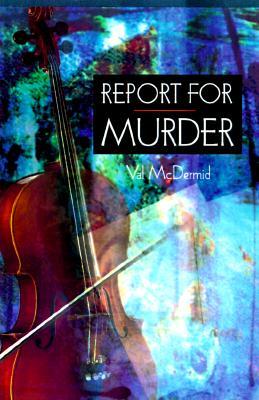
Originally hired to write an article about a fundraising gala at a girls’ boarding school, struggling journalist – and self-proclaimed “cynical socialist lesbian feminist” – Lindsay Gordon is embroiled in a murder investigation when the fundraiser’s star, renowned/reviled cellist Lorna Smith-Couper, is found dead, garrotted by her own cello string. Lindsay digs into the murder with the help of playwright and school alumna Cordelia, and romance slowly blooms between them. But Lindsay’s interest in finding the killer takes on new urgency when her friend Paddy, a housemistress at the school, becomes the police’s chief suspect. Through interviews with the many people who seemed to have motive to do away with Lorna, Lindsay attempts to unravel the mystery and unmask the murderer before it’s too late for Paddy.
Overall, this was an enjoyable read. McDermid’s mystery novels are engaging: they’re the kind of mystery novels that you end up racing through in one go, hanging on every word until the very last sentence. She has a flair for putting characters in peril and deftly pulling them out in unexpected ways, and Report for Murder, full of fun twists and turns, is no exception. And despite the fact that it was published in 1987, it doesn’t feel too dated (except when Lindsay is phoning in her reports to her editor).
The novel is McDermid’s first published work though, so it doesn’t showcase all of her usual fluidity with the vagaries of the murder plot. The drama occasionally felt heavy-handed, and many of the characters’ motivations did not feel particularly believable. Lindsay’s own personality occasionally felt heavy-handed as well (at one point, she drives several hours away to confront a murder suspect face-to-face, alone, without telling anyone where she is going). At times she is a one-dimensional character: she has odd conversations with other characters in which she shares her ideals and a values in a way that feels wooden and bland. And the novel is driven much more by talk than by action – which makes sense, given that Lindsay is a journalist.
Despite these flaws, Lindsay is an engaging character, and the novel pulls the reader in. Lindsay’s romance with Cordelia is one of the novel’s strengths: though it ties in only minimally with the murder plot, it exists cohesively with the mystery, fleshing out Lindsay’s character and offering a fitting counterpoint to the drama of the investigation. Though this blossoming relationship is not the novel’s focal point, it is nimbly woven into the story, and doesn’t feel forced or extraneous.
If you’re a fan of the lesbian mystery novel genre, Report for Murder is worthy of your time, though I can’t speak for the rest of the Lindsay Gordon series as I have yet to read any of the other novels. I am working my way through Val McDermid’s novels (based on their availability at my local public library) and I recommend reading some of her other works as well, though you can skip the incredibly transphobic The Mermaids Singing. The Kate Brannigan series has a lively (albeit straight) protagonist and some lesbian supporting characters, and some of McDermid’s standalone novels have lesbian characters as well: Trick of the Dark boasts a cast full of queer women, (both protagonists and antagonists) and an excellent unputdownable mystery to boot.
[Trigger warning for suicide of a secondary character.]
Holly reviews Alchemiya by Katey Hawthorne
This story takes place in Chrysopoeia, a land where the art of alchemy is a celebrated craft that is known and practiced only by the higher class clans. Each clan has a particular form of alchemy that they have honed through generations to produce vibrant dyes, textiles, fragrances, gems, and metals. Our protagonist is Eugenia, a young woman born into a life of privilege as a member of the Ratna clan. Although Eugenia is very talented in her family’s particular branch of alchemy, the secrets of their alchemical history are forbidden to her because of her gender. In this patriarchal society, wealth and knowledge are passed down through the men of the family. A woman’s station in life is determined by the station of the man she is born to, and later, the man she marries.
This society strictly adheres to patriarchal power dynamics, a strict gender binary, and heterosexuality. As a woman who is driven to practice her family’s craft, Eugenia is a black sheep, but is tolerated as an oddity. However, she is ostracized by polite society when her tryst with another woman becomes a public scandal.
The standing of the Ratna clan is powerful enough that, despite Eugenia’s disgrace, they are still held in high regard. Eugenia is forced to participate in social activities at the behest of her father and brother, despite her unofficial status as a pariah. At one social gathering, Eugenia is approached by the incredibly eligible bachelor Oliver Plumtree. Oliver is the head of the one of the oldest and best-regarded families in Chrysopoeia. His interest in a person who has faced the disgrace of such a scandal shocks the community. Eugenia is flattered by the attention, and is drawn to Oliver in a way that she has never found herself drawn towards a man. We soon learn that the reason for this inexplicable attraction is…
[SPOILER]
… Oliver is actually Olivia! Oliva and Oliver were a set of twins. When the male twin (and sole heir) died as a small child, the family made the decision to raise Olivia as Oliver, ensuring that the Plumtree family’s wealth and alchemical secrets wouldn’t fall into the hands of jealous and greedy relatives. Jane Austen once said, “It is a truth universally acknowledged, that a single man in possession of a good fortune must be in want of a wife.” Olivia is no exception. And who better to keep Olivia’s secret than Eugenia, a woman who is vocal in her resistance to the heteronormative, patriarchal status quo?
Eugenia is thrilled by this revelation. This marriage would provide her with freedom from her domineering male relatives, the opportunity to hone her alchemical craft in earnest, and a chance to find love in a world that aims to deprive her of that possibility. Of course, it wouldn’t be much of story if there weren’t a few bumps in the road for Eugenia and Olivia to overcome. Eugenia, despite her best efforts, ends up creating trouble for herself and for Olivia, and we get to enjoy watching her try to claw her way out again.
This is a fun, fast read that, despite being easy breezy, still touches on important topics such as gender identity and intersexuality. The author knows how to spin a good yarn, and gives us a protagonist that is sometimes delightful, sometimes petulant, and sometimes both of these things at once. This is the first Katey Hawthorne book that I’ve read, but it sure as heck won’t be the last.
Kalyanii reviews The Raging Skillet: The True Life Story of Chef Rossi
After reading The Raging Skillet, I’m not certain whether I’m desperate to marry the legendary culinary mastermind known simply as Rossi or to live within her skin. It would be futile to deny my appreciation for the handful of openly lesbian chefs whose careers have blossomed in spite of – or perhaps due to – their determination to manifest a passion for food while remaining true not only to their culinary sensibilities but to the very essence of who they are. Gabrielle Hamilton, even amid the rumors surrounding her personal life, most notably comes to mind. However, none have inspired within me the spirit of resilience, determination, creativity and authenticity to quite the extent that Chef Rossi has. Her journey’s not been an easy one; she earned every bit of her success. And, the woman who’s lived to tell the story holds my admiration as well as my most heartfelt gratitude, for I just may be something more of a force in my own right for all that she’s endured.
It is to the introduction of the microwave oven that Rossi attributes her professional destiny, for once the appliance found its way into her family’s home, seldom did her mother serve any of the Hungarian faire that had graced the table, day in and day out, prior to its arrival. Unimpressed with the flavorless, prepackaged dinners that took the place of her mother’s slaved-over kosher dishes, the young Rossi began inventing and presenting concoctions that gleaned the enthusiasm of her family, later the adoration of her stoner friends and eventually the devotion of the drunks to whom she served avant-garde nachos in an attempt to sober them up before last call. It didn’t take long for her to realize where to access her influence.
Aside from a two-week bartending course, Rossi embarked upon her culinary career with no formal training. However, her chutzpah landed her positions in the food industry shortly after she ventured out on her own as a teenager, fleeing the oppressive Hasidic expectations of her family and religious community. Beyond a stint selling subscriptions forThe New York Times, a gig on The Matthew Rousseau led to both dive and ultra-trendy establishments until she found herself named by Zagat “the wildest thing this side of the Mason-Dixon Line.”
Her anecdotes pertaining to her mother’s frugality and over-the-top kitchen dynamics inspire laugh-out-loud snorts and giggles against a backdrop of poverty, friends lost to AIDS and the challenges of proving herself in what was, especially in the 80’s, very much a man’s world. Rossi’s sense of humor proves caustic while still rather cornball, a combination I found to be terribly endearing.
I appreciated that Rossi opted for a less sentimental approach to her hardships and losses, for their gravity is evident in simply being what they are. In addition, the objectivity with which she addresses painful circumstances serves as indicative of her forward focus and innate refusal to become mired within the muck of a life lived well and boldly.
Though Rossi admits to a tendency to kvetch, or complain, the reader never sees it. She attributes the wise words “Sweetie, I come here to work, not talk about what hurts. What does not? Everything hurts. This is life… so forget it. Make some gorgeous food!” to Niko, a chef who over time assumed the roles of brother, son, wife and prodigious butter-plater, but I suspect that his guiding principles are as much hers as his own, even if she hesitates to give herself credit for it.
The chapter pertaining to her time spent at Ground Zero was perhaps, for me, the most profound of them all. Rossi does an outstanding job of capturing the essence of 9/11’s early aftermath and humanizes what remains, for anyone born post-WWII, the most jarring event of our lifetimes.
Each chapter of The Raging Skillet is accompanied by a couple of recipes associated with the events described within. Viewing the measuring cup as a “soul-crushing” instrument, Rossi notes amounts in plops and coffee cups of a given ingredient, making the recipes incredibly accessible; however, I would have given anything to learn more about her technique and creative process, secrets and all. I’m just that greedy… though it doesn’t stop me from noshing “Riverboat Guacamole” even as I pen this review.
Within the acknowledgements, Rossi thanks her girlfriend, Lydia, for “filling a void in my heart that I didn’t know was there,” so I won’t hold my breath for a proposal. However, I will continue to ponder the lessons that Rossi’s learned, share her story with fellow foodies and remind myself, when push comes to shove, within or beyond the kitchen, to hold my own when it matters and find humor in the rest.
Bessie reviews The Red Parts and Jane by Maggie Nelson
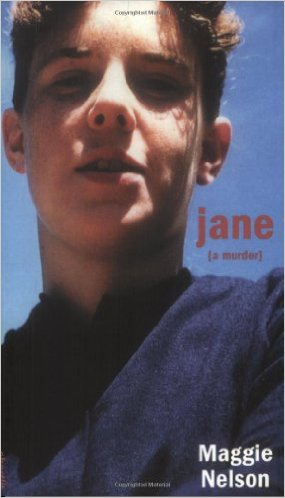
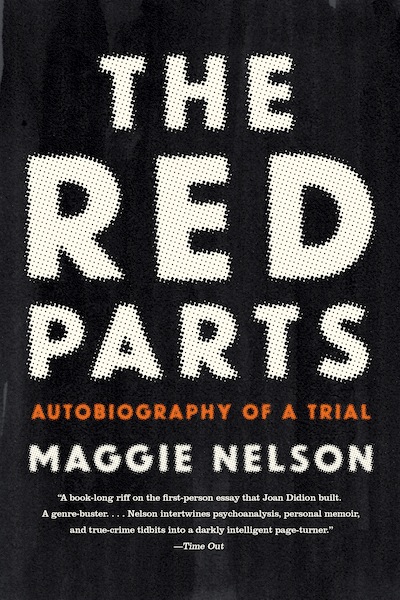
Nelson is a wonderful writer, whose memoir/queer theory explosion The Argonauts was probably the best book I read last year. It got me interested in checking out some of her earlier work, The Red Parts and Jane, which are very different from The Argonauts, and from each other, but both exceptional books.
I wasn’t sure about writing about these books here, because Nelson doesn’t address her sexuality at all, but they’re both so good. We’re more than a single aspect of our identity. Here Nelson is writing as a daughter, a niece, a young woman who sees herself in her aunt’s fate.
I read The Red Parts first, and it opened up the world of Jane to me. Though it was written later, I think I’d recommend this reading order. Both books deal with the story of Nelson’s aunt, Jane, who had been murdered thirty-five years before. The crime was never solved. Nelson grew up with this story as a part of her family history. It shaped her childhood in ways that she didn’t really understand until she got older. Jane is the book of poetry she wrote trying to understand her aunt and the murder. Just before Jane was going to be published a detective called Nelson’s family and told them that they had found the murderer. The Red Parts is the memoir she wrote about this news, the ensuing trial, and how Nelson’s perspective on the case shifted with new information.
The Red Parts is a really compelling mix of true crime/detective story, family history, and writer’s journal. Nelson’s relationship to Jane’s death is informed by the fact that she just spent years writing a book of poetry about it. She’s done the research, she knows the facts, she’s visited the sites. And now all of this information is being presented in the new context of a trial. From her family it is just Nelson and her mother who are able to attend every day of the trial. We also see how Nelson went about writing Jane. Having her describe the process that created these poems made me really want to read them.
That Jane is an artifact within The Red Parts informed how I approached it. It gave a backstory for how these words wound up on the page. In the poems she tracks down her aunt’s old boyfriend — we see more of how this happened in The Red Parts. It gives more history and context for everything that happened. While I’m sure the poems would stand on their own, having the memoir as well enriches the experience.
What really struck me reading Jane was the way it commented on the vulnerability of being a young woman. Jane was coming of age during the late sixties. She was rebelling from her parents, and starting to create her own life, which was suddenly halted because women, especially young women are vulnerable to male violence. While Jane was not raped, at the time her death was linked to a serial killer who did really horrific things to his victims. Nelson’s writing about violence against women, including sexual violence, is so raw. This vulnerability is something she shares with her aunt, something that has not changed or gone away. Both books riff off an Edgar Allen Poe quote wondering what the most poetic topic in the world is, and deciding it must be the death of a beautiful woman. That is almost the subject of Nelson’s poetry, but she’s equally preoccupied with asking what is it about our world that makes this a correct answer.
Both books are the sort of writing that sweeps you up and holds on. I didn’t mean to read The Red Parts in one night. I was going to read a little bit before bed, but not much, because I was worried about the true crime element giving me bad dreams. But then it was so good, and so compelling, and I couldn’t put it down. I spent a wonderful raining afternoon with Jane. It’s such a narratively gripping collection of poems. Even though I knew the story already from The Red Parts, I wanted to follow Nelson’s train of thought, and see where her poetic journey into her aunt’s murder lead. They’re beautiful, tragic books.
Queer Witches, Comics for Orlando, and Visible Bisexuals: Link Round Up September 4 – 24
Autostraddle posted
- Drawn to Comics: Power & Magic Brings Women of Color and Witches Together in The Best Anthology Ever
- Lez Liberty Lit #106: What Is Women’s Lit?
- Drawn to Comics: Lumberjanes Reminds Us that All Hardcore Lady Types Are Welcome
Casey the Canadian Lesbrarian posted My Favourite Bisexual Women’s Literature @ BCLA LGBTQ and My Favourite Bi+ Books of 2016 (So Far).
Lambda Literary posted New in September: Bob Smith, Ari Banias, Tim Lawrence, Michelle Tea, and Emma Donoghue.
LGBTQ Reads posted LGBTQIAP+ YAs Available in Audio.
Women and Words updated their New Releases & Coming Up page.
Rebecca Sugar, creator of Steven Universe and author of The Answer, was interviewed at PBS about writing LGBTQ stories for kids.
“Comic Book Artists Create Publication to Honor Orlando Victims” was posted at The New York Times.
“Cold revenge and sweet love A queer femme of colour looks at The Handmaiden” was posted at The McGill Daily.
“One To Watch Out For: Celebrating the Genius of Alison Bechdel” was posted at Comics Alliance.
“What’s New in LGBTQIA+ YA September and October 2016” was posted at School Library Journal.
Poppy Jenkins by Clare Ashton was reviewed by Shira Glassman.
Georgia Peaches and Other Forbidden Fruit by Jaye Robin Brown was reviewed at GLBT ALA Reviews.
Spirits Abroad by Zen Cho was reviewed by Shira Glassman.
Here Comes the Sun by Nicole Dennis-Benn (audiobook) was reviewed at Omnivore Bibliosaur.
Wedlocked: The Perils of Marriage Equality by Katherine Franke was reviewed at Lambda Literary.
Girl Mans Up by M-E Girard was reviewed at Autostraddle and Malinda Lo.
Four Steps by Wendy Hudson was reviewed at Lesbian Reading Room.
Vow of Celibacy by Erin Judge was reviewed at Lambda Literary.
Radical by E.M. Kokie was reviewed at queer lit on my mind and Lambda Literary.
Not Your Sidekick by C.B. Lee was reviewed at queer lit on my mind.
Princess Princess Ever After by Katie O’Neill was reviewed at The Mary Sue.
They May Not Mean To, But They Do by Cathleen Schine was reviewed at Lambda Literary.
The Answer (Steven Universe) by Rebecca Sugar was reviewed at Okazu.
This post, and all posts at the Lesbrary, have the covers linked to theirAmazon pages. If you click through and buy something, I might get a small referral fee. For even more links, check out the Lesbrary’s twitter! We’re also on Facebook, Goodreads, Youtube and Tumblr.
Thank you to the Lesbrary’s Patreon supporters! Special thanks to Martha Hansen, Emily Perper, Kath, and Karen. Support the Lesbrary on Patreon at $2 or more a month and be entered to win a lesbian/queer women book every month!
Danika reviews Searching for Sappho: The Lost Songs and World of the First Woman Poet by Philip Freeman
I always want to know more about Sappho, but perhaps that’s a doomed quest. No matter how many books I pick up about her, the truth is, we just don’t know very much. Searching for Sappho doesn’t claim to uncover anything previously unknown about Sappho, but it is a serviceable overview of what is established about her life.
It’s not surprising that a new book about Sappho came out in the last few years. A poem of hers was discovered for the first time in 2014, and from there the clock was ticking for a truly complete collection of her poetry to come out. Searching for Sappho fits this bill, but I couldn’t help the cynical conclusion that this was the only reason it was published. (Only about half of this book is a biography of Sappho: the rest is a collection of all of her poems discovered to date.)
This book sticks to the facts of Sappho’s life (as well as telling the story of the recent discoveries), but because those are so few and far between, they’re supplemented with general facts about life in ancient Greece. This did feel a little bit like padding, but at the same time, it was really enjoyable. I didn’t pick up Searching for Sappho as a general history book, but the tidbits about things like ancient Greek medical advice had me cringing and laughing.
I did also appreciate the undercurrent of feminism throughout this book, especially since–and this may be unfair of me–it was written by a guy. There is just a brief chapter on Sappho’s love of women, but the book focuses around the sexism women faced in this society, and discourages the reader from seeing even women Sappho feuded with as being sexist caricatures.
This isn’t a revolutionary take on Sappho, but what could be? The cold reality is, we have only scraps of information about her life, and this book is a fine overview of them. As for me, I think I’ll keep hunting for the stories we tell about Sappho, because I think that what we believed about her is just as interesting a story as they life she really led.
Marthese reviews Climbing the Date Palm by Shira Glassman
“Bravery isn’t all swordfighting and riding dragons”
Climbing the Date Palm is the second book in the Mangoverse series by Shira Glassman. This series is a fantasy series with Jewish traditions and has a diverse cast with the main characters being Queen Shulamit and her girlfriend Aviva and Rivka, Shula’s head guard and Isaac, her companion.
The book picks up a little while after the first book ends and starts with Aviva encountering a near-to-death horse rider who turns out to been Prince Kaveh from the city of red clay who came to Riv- who is mistaken by most as a man, who has a male companion- to ask for help as his sweetheart Farzin was imprisoned by his father.
Our group of intrepid heroes, or well Shula’s group of close friends work to save Kaveh’s life. Rivka’s mother also joins the palace while Shulamit, who more than ever has her whole country on her shoulder comes up with a plan to sire and heir with the bisexual prince.
The plot follows the casts’ trials as they try to save Farzin’s life. Farzin, an engineer and old friend of Kaveh’s was imprisoned for siding with his workers when they were not paid as they should; as well as for ‘corrupting’ Kaveh.
More than the plot, the story offers interesting conversations between the characters that allow the readers to think about life and its lessons in a very simplified way. The way that Glassman put things into perspective may sometimes be too simplistic but still very thoughtful. Things like bisexuality- and not being interesting in everyone, stereotypes on women and gay and bisexual people, parenting, being responsibility and insecurity and discussed in a mature but not complex way. Isaac provides very good pointers on how to strike up a conversation, if you ever need to gather intel!
I felt that this book, as mentioned, deals with heavy and exhausting topics – most of which many of us have to repeat over and over- in an interesting, sometimes metaphorical and simple way that almost everyone would be able to get. I felt it was more complex than the first book and the characters are growing into themselves. As it’s the second book, I cannot give much spoilers but the answer to problems in this world is answered with geekery from everyone, charm, persistence, team-work and effort.
The relationships in this book are very mature for the most part. Although there was a lesbian couple, and Shula is the protagonist; the story was more than that and included a lot of flashbacks from Farzin and Kaveh’s time together. The diverse characters work well together and are like a puzzle that fits with the story.
Climbing the Date Palm was a highly enjoyable read and as it’s part of a fantasy series, we get to immerse ourselves in the world for the duration of other books as well! I’ll definitely continue with this series.
Megan Casey reviews The Small Town Series by Iza Moreau
It’s not that hard to review an entire series of lesbian mysteries as long as you read them consecutively and within a fairly short time. Unfortunately for the genre, many series novels are just the same book written again and again with different minor characters who commit slightly different crimes. The Kylie Kendall mysteries by Claire McNab, are a case in point. Kylie solves cases for Australian clients while trying to find a way into her gorgeous colleague Ariana’s fashionable trousers—that’s pretty much all you need to know—and all you will remember. This is not to say that the Kylie Kendall mysteries are not enjoyable: they are. It’s just that there is no history in them; the characters do not evolve. Kylie is funny and uses quirky Aussie slang, but by the third book you are pretty tired of the same old.
The Small Town Series by Iza Moreau is quite different. In this literary, four-book series, the main characters age, mature, and even move on, all the while solving mysteries that range from quirky puzzles to serious crimes in their small community in north Florida.
In the first novel in the series, The News in Small Towns, Sue-Ann McKeown is introduced as a successful war correspondent in Iraq. She is called home to her small home town of Pine Oak, Florida after her mother dies in a riding accident. Burned out by the war and suffering not only from Post Traumatic Stress Disorder but also from a debilitating illness called Graves Disease, she decides to stay in Pine Oak, the only job she can get being that of a lowly reporter for the town’s small newspaper. And if things are not bad enough, the business manager for the newspaper is none other than Gina Cartwright—her old high-school nemesis—who just happens to be dating the editor. And that’s when the fun—and the romance—starts.
And hey, Sue-Ann is not only a pretty famous reporter, she was once an alternate on the U.S. Olympic archery team: she carries a bow and she knows how to use it. She is also a dedicated lower-level dressage rider. She is helped in her adventures by an elderly, napalm-scarred Vietnam veteran called The Creeper who lives in a mysterious compound in the woods with other battle-scarred solders—and with his grandchildren Gamma and Smokestack, who are the main deejays in the pirate ratio station located within the compound.
Unlike McNab’s Kylie and Ariana, who seem to have been born with the word DYKE tattooed to their foreheads, neither Sue-Ann nor Gina initially considers herself a lesbian. Remember that they both grew up in the 1970s in a very southern, very rural, very homophobic area. One of the strengths of these books is that, in addition to being fast-paced adventures, the author chronicles the doubts and fears and surprises of both Sue-Ann and Gina as they grow closer and closer together. Their relationship, in fact, overshadows the mystery in the book, which has to do with the very odd subjects of animal sacrifice, voodoo, and parental neglect.
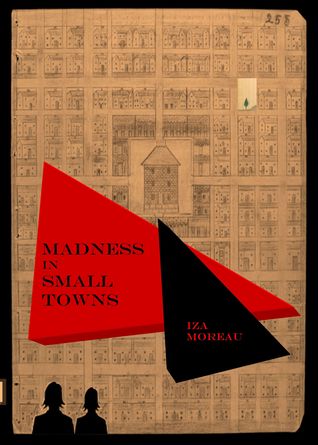 In the second book, Madness in Small Towns, Gina disappears, and Sue-Ann, in addition to solving a couple of puzzling mysteries—one having to do with a murderous escapee from a mental hospital who seems intent on skewering her with a samurai sword—has to find her. As in the first novel, there is a chapter about Sue-Ann’s 6-month posting to Baghdad—the friends she met, the boozing she did, and the tragedy she experienced there.
In the second book, Madness in Small Towns, Gina disappears, and Sue-Ann, in addition to solving a couple of puzzling mysteries—one having to do with a murderous escapee from a mental hospital who seems intent on skewering her with a samurai sword—has to find her. As in the first novel, there is a chapter about Sue-Ann’s 6-month posting to Baghdad—the friends she met, the boozing she did, and the tragedy she experienced there.
The third book, Secrets in Small Towns—which delves into the shadowy subject of child molestation in halfway houses—shows Sue-Ann and Gina as a happy, but still-secret, couple. In a small town in rural North Florida, not only could neither afford to come out, but no one else could either, so they lived their lives in the type of vacuum that so many gay women and men in small towns find themselves sucked into.
Well, why don’t they just leave? For one thing, Sue-Ann loves her job at The Pine Oak Courier, especially after she takes over as editor in Madness. She is also reluctant to leave the farm that her mother worked so hard to build, and the horses that live there. But mainly it is because she has already had her moments of glory and excitement. She is no longer interested in reporting—or shooting arrows—on the world stage. Been there, done that. She simply wants a quiet life with Gina
Those who are familiar with Robert van Gulik’s series of mysteries featuring Judge Dee in 7th Century China, know that his mysteries make use of the ancient tradition of writing in that era, having Judge Dee solve several cases—sometimes unrelated—in the same novel. Moreau follows this tradition, although her plotlines always merge at the end. Each book includes a chapter flashing back to the Iraq war and generally shows her skill both with horses and with her bow and arrow. And, of course, with her developing relationship with her former rival.
The fourth book in the series, Mysteries in Small Towns, is a collection of short mysteries featuring Sue-Ann and Gina. Although this is not unusual in the general mystery genre—we are all familiar with Agatha Christie’s books featuring short stories about Poirot and Marple—it is rare in lesbian mysteries, with only one other author—Barbara Wilson—attempting to augment her series novels with stories. Moreau’s short stories are, unlike her novels, more traditional mysteries with more obvious crimes and criminals that have to be brought to justice.
So the series is important on a number of levels, but maybe the most rewarding is the evolution of Sue-Ann’s and Gina’s relationship. They go from assuming their absolute heterosexuality to admitting that they are interested in each other—but just in each other. They then run the rest of the gamut of suspecting that they may be bisexual to finally eschewing men altogether and accepting that they are lesbians through and through.
For those readers that dislike reading about heterosexual sex, be warned; there are a couple of man/woman couplings in the beginning of the first novel, The News in Small Towns, but they are included to provide a realistic background for both Sue-Ann and Gina. If the subject offends you, either begin with the second book or read something else. Author Moreau has posted on her website that there will be no further Small Town Series books, but the four that she has left us will probably be around as long as there are lesbian mystery readers. All four are available separately as inexpensive e-books or you can buy all four for under $10 from most e-book retailers.
For more than 200 other Lesbian Mystery reviews by Megan Casey, see her website at http://sites.google.com/site/theartofthelesbianmysterynovel/ or join her Goodreads Lesbian Mystery group at http://www.goodreads.com/group/show/116660-lesbian-mysteries


